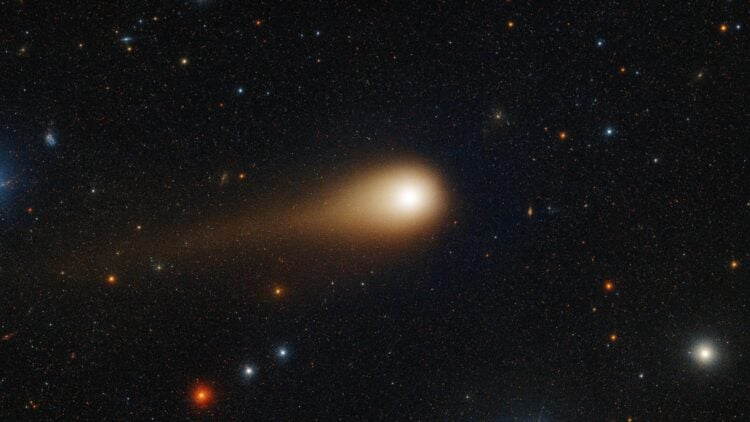In case you haven’t heard, an interstellar object has decided to pay us a visit in the solar system. It is comet 3I/ATLAS, and it is the third object created outside our system to appear here in recent years. This month it passed close to Mars, and it is estimated that in December it will pass close to Jupiter. Although we can’t see it with the naked eye from our planet Earth, scientists and astronomers are beside themselves with joy.
Comet 3I/ATLAS is the third interstellar object confirmed by humankind. It was named after the ATLAS system in Chile, where it was discovered on July 1, 2025. This comet is traveling so fast that it is not governed by the gravitational pull of our sun.
It follows its own hyperbolic orbit, which guarantees that it came from outside and will continue forever. It is estimated to be twice as old as our own sun, between seven and 10 billion years old. It is also traveling at a breakneck speed of 60 km per second. Not only that, but the latest high-tech observations that are monitoring its every move (like paparazzi following Lindsay Lohan in the 2000s) reveal that it is releasing an organometallic gas so rare that it only occurs on planet Earth if it is produced in factories. Needless to say, this enigma has the scientific community baffled.
Interstellar Gases: Nickel without Iron
At first, everything pointed to this comet resembling other visitors such as comet 2I/Borisov. From a distance, it showed a fairly clear cloud of gas and dust, indicating cometary activity. However, high-resolution spectrographs have revealed something quite unusual. Giant telescopes such as Keck II in Hawaii and the European VLT detected an intense emission of nickel in its coma.
Even if it’s been many years since you took chemistry class in high school, we need to provide a little context: in all the comets and meteorites we have studied so far, nickel always appears accompanied by iron. Both metals are like twins, forming stable relationships throughout the known universe. However, it seems that comet 3I/ATLAS breaks the rule that we had considered fundamental until now.
The “Man-Made” Molecule
This discovery is so rare that scientists have had to look for a rather unusual chemical explanation. To explain how nickel can exist at low temperatures in space, the following hypothesis was reached: nickel must be bound to carbon and oxygen molecules. This compound is a toxic and highly volatile substance, which is only found on Earth in industrial metallurgy. In other words, it does not occur naturally on our planet at all, but only after metal refining and plating processes. Until now, no natural process in space was known to be able to create it efficiently. This anomaly has sparked considerable debate.
The Harvard Voice, led by Professor Avi Loeb, took advantage of the finding. Loeb has used this “industrial” compound to reinforce his speculative position. He argues that if the object emits a molecule that we only know how to create in factories, we must consider the possibility of a technological or artificial origin. Yes, he is implying what you think he is implying: the comet may be alien technology. Although we like to talk about colonizing Mars or moving to the moon as if it were a vacation resort, astronomers are still on the lookout for intelligent life other than ourselves.
The Search Continues
Before we rush into collective hysteria, space telescopes around the world are contributing to the picture. For now, the James Webb Space Telescope (JWST) has detected a high proportion of carbon dioxide in the comet.
The comet gave us a (temporarily) missed opportunity for close observation. It passed just 12 million miles from Mars between October 4 and 7, 2025. This allowed several orbiters on Mars to point their cameras. For now, we have to keep waiting for conclusive data, but if you have friends who are very fond of astronomy and haven’t been sleeping lately, you know why. The latest comet passing through the solar system may be something created by aliens.

